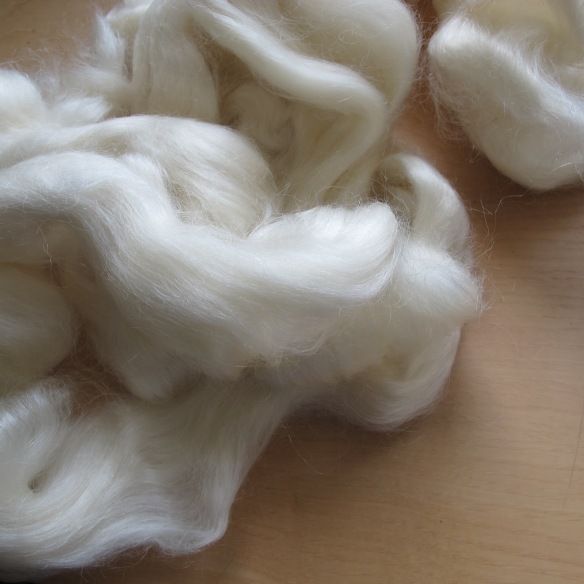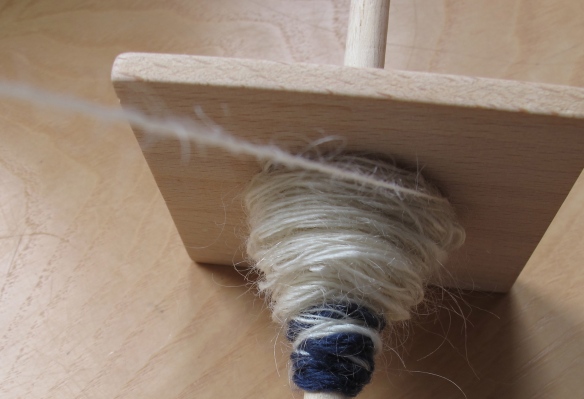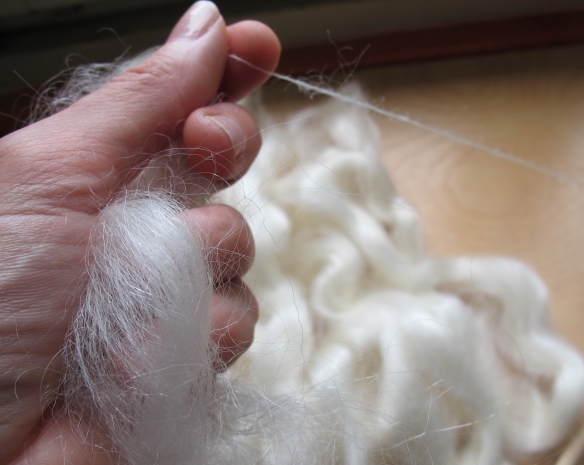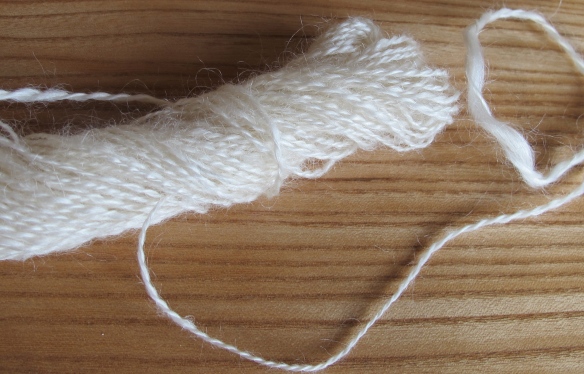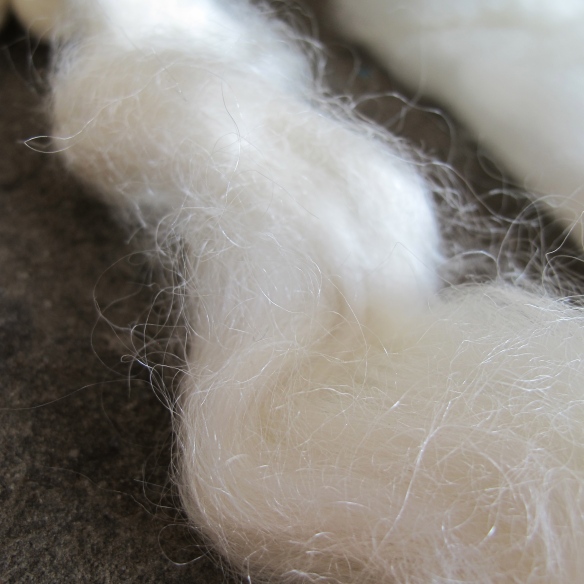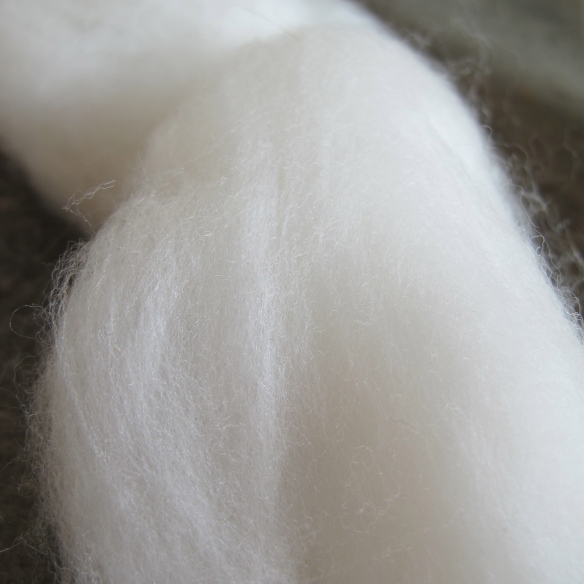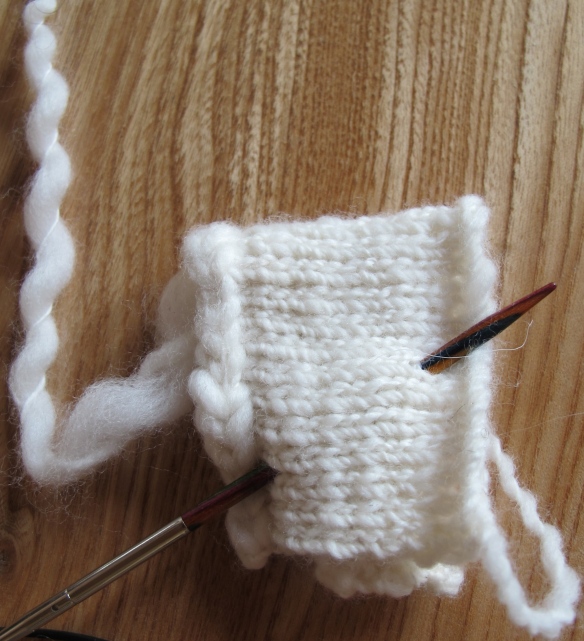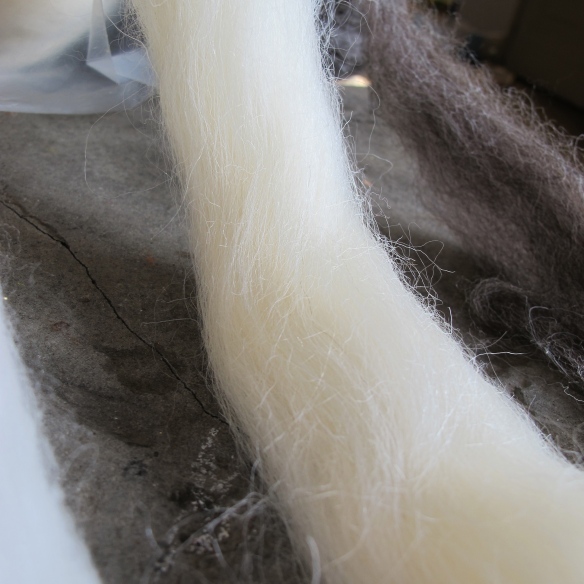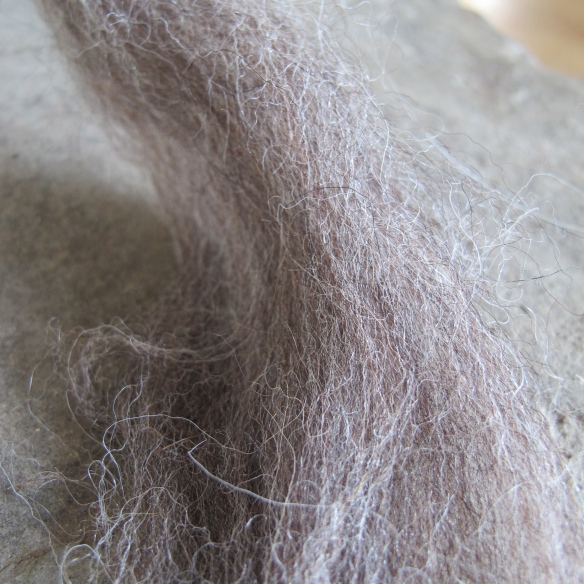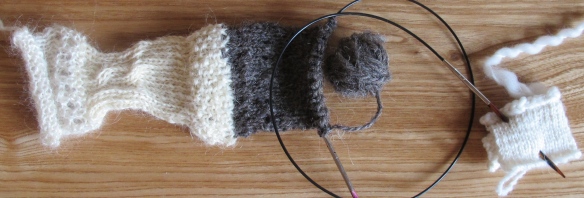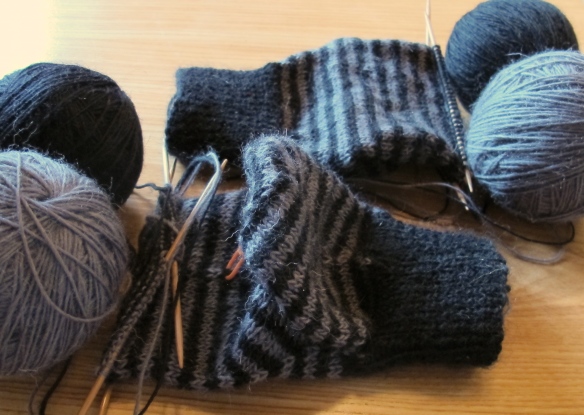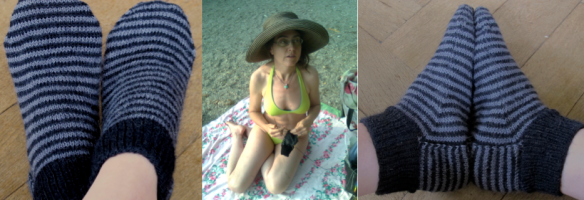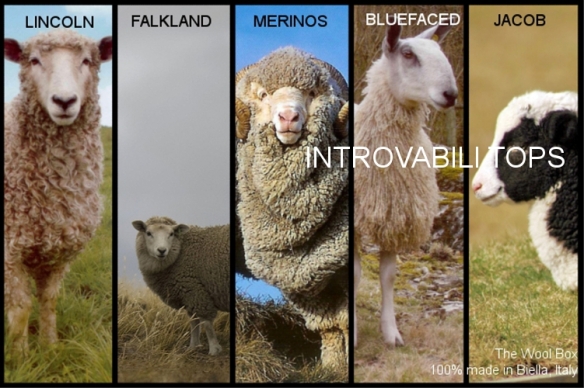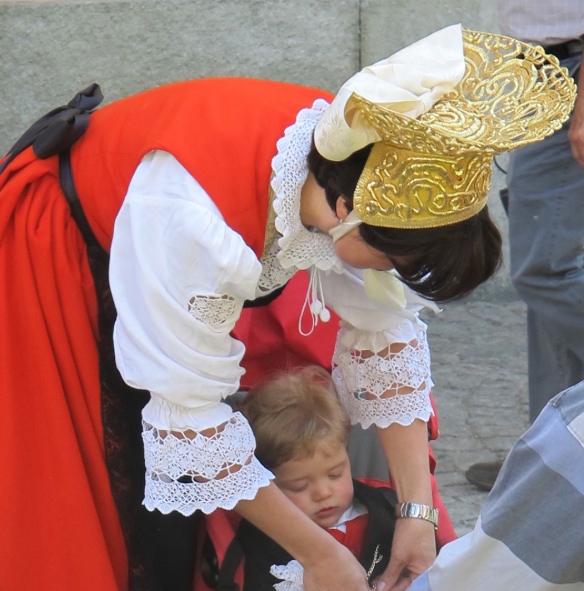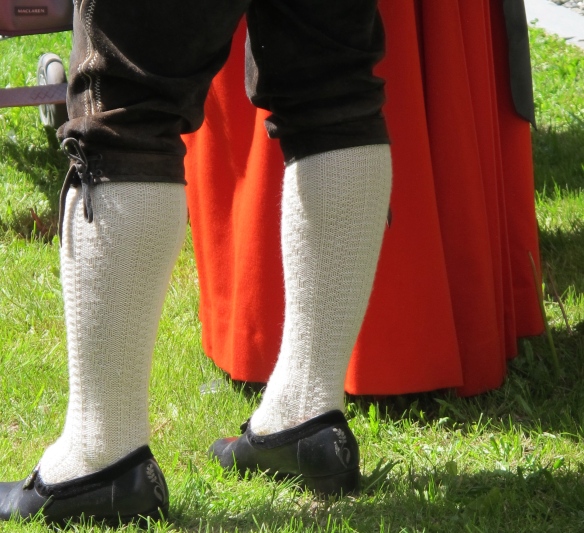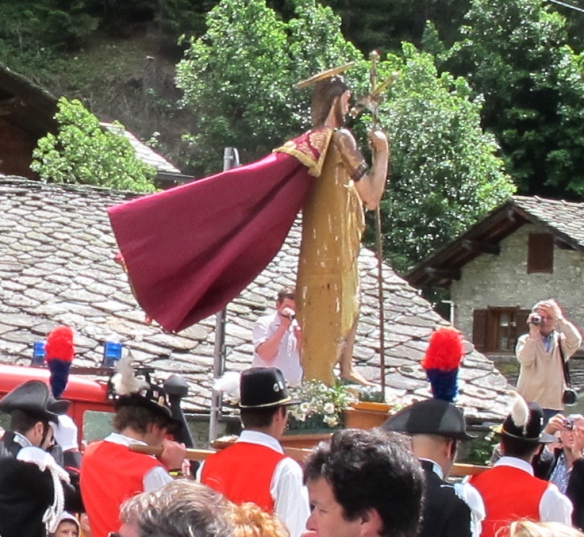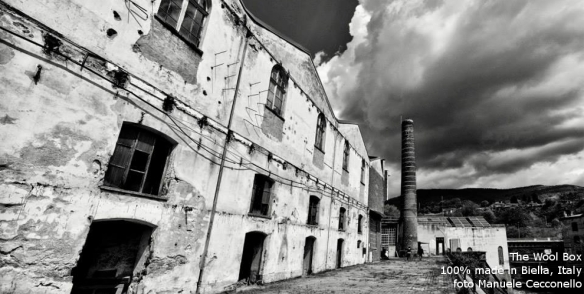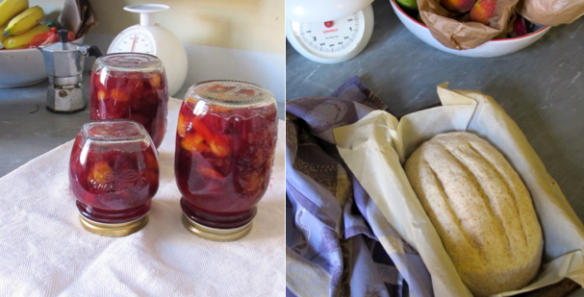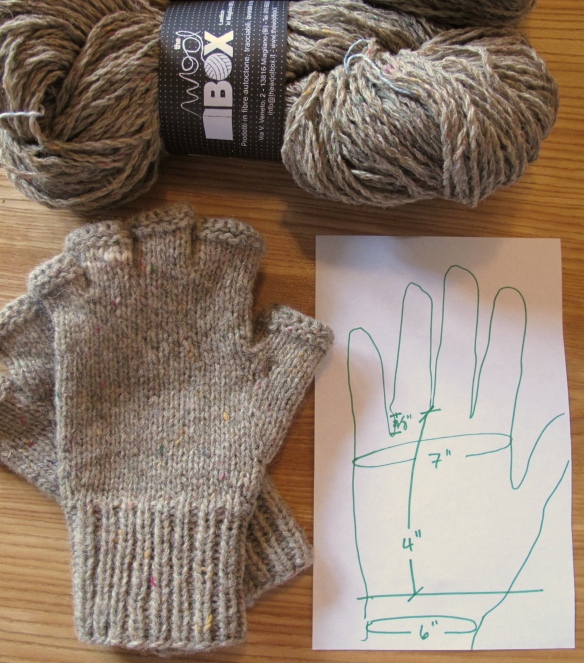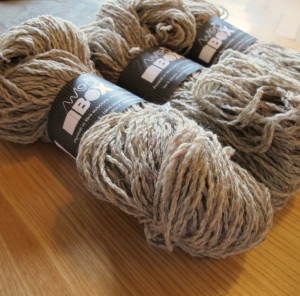A little more weight on the bottom…giving it a whorl
The spindle spinning workshop that I took back in June was great! I just haven’t had time to get my pictures together to write about it (sigh…time is hard to come by). I was lucky and two english-speaking friends went with me so I was busy trying to simultaneously translate while learning about bottom-whorl spinning.
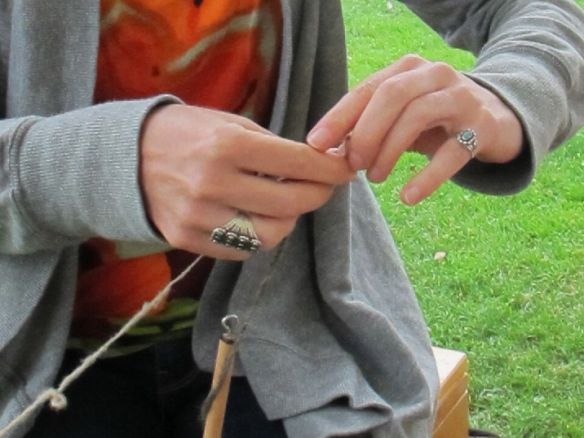
One of my friends joins two spun singles for plying
We all started out with four 25 gram hanks of 4 different kinds of tops/roving: Norwegian, English, Italian, and Brazilian. Each type of roving had a different characteristic quality and they each took a different mindset to spin. As I’ve said before, the Norwegian wool – like BFL but even more so – practically spins itself, just enough kink to cling and a really long staple fiber. The English wool was like the Amaranth wool I’ve been spinning at home, shorter fiber but even kinkier so it’s quite sticky enough to make a really fine gauge single and so also springy enough to push back against the twist if it wasn’t drafted well. The Italian roving (from Biella and Abruzzo wool), like many things Italian, required more attention, like the english fiber, it was a shorter but less kinky and produced a dry, complexly colored yarn. Last but not least, the Brazilian was long and silky with almost no kink at all and so I found it challenging to not let it slip through my fingers!
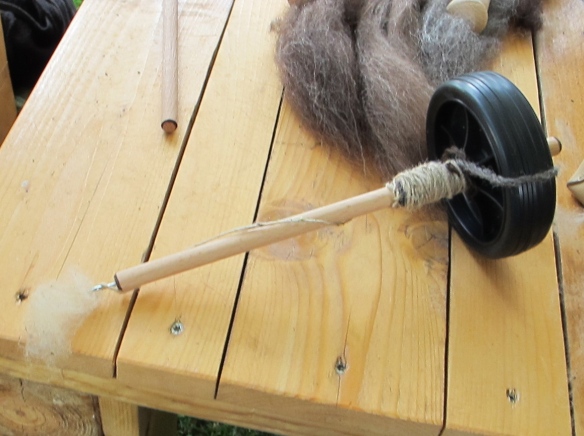
Modular spindle with roving at top (from left: Brazilian light brown, Italian Moretta, and Norwegian Grey) On the spindle: raw fleece – spinning ‘in the grease’
After lunch we go into the grease!
The lunch at Pettinengo’s Villa Piazzo was a delicious combination of local cheeses and vegetables from the villa gardens, wonderful pasta dishes and simply prepared meat and an egg dish (fritatta). In the end, the cooking was just what Italians do best – take fabulous ingriedients, prepare them simply and present them elegantly – food that’s low on fanfare, high on quality. After the last tasty nibble, it was time to get back to work.
Given that I’d already taken one workshop and learned the basics with a top-whorl, with minor adjustments I found the bottom whorl equally fun to use and our instructor, Emilio, showed me a great trick to keep a thinner single from breaking with the 80 gram whorl (thank you Emilio!). What came next was, for me, the most interesting part of the workshop. Emilio pulled out three bags of natural fleece, one washed but not carded, one unwashed lambs wool that still had it’s little pointed locks, and one raw fleece that was neither washed, sorted carded or combed…all from the same kind of sheep! Wow, what an amazing difference between them. With these we all got a chance to try carding with the combs and making batts. What a lot of ‘not wool’ came out of the un-preped fleece when we carded! The wool that was washed spun much like the Italian Moretta that we’d spun earlier, the lamb’s wool was light and delicate as a cloud and then the un-preped fleece…I was amazed at how fine a single I was able to spin ‘in the grease’ compared to the same fiber when it was washed (and it softened and sheep-ified my hands too)! When I got home I washed the little bit of plied yarn and it came out fluffy and clean:
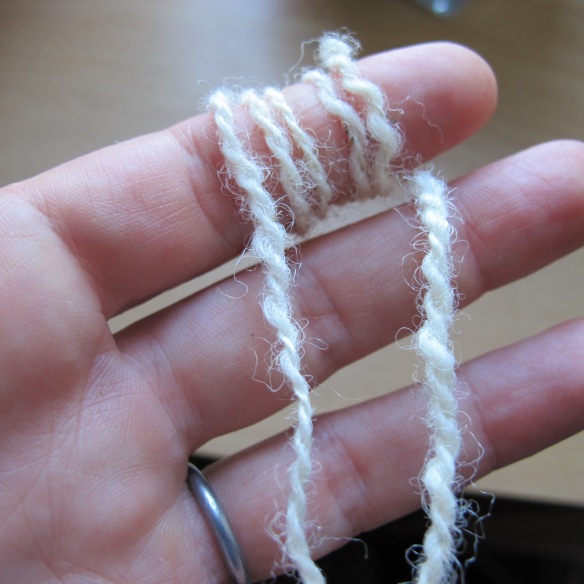
Yarn spun ‘in the grease’ from short-staple Italian wool after washing and drying.
Later, Emilio showed us how to ply unspun roving with commercial yarn to make ‘Art Yarn’:
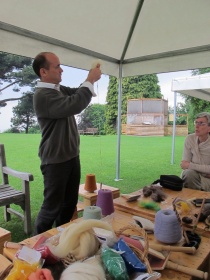
Emilio shows us how to make ‘art yarn’ on a drop spindle with un-spun roving and commercial yarns.
Then, we had a chance to see and touch some rare (and quite expensive) luxury fibers: Camel, Cashmere Ultra fine, Qivuit, Musk Ox, Yak (brown & white), Yangir and Sea Silk.
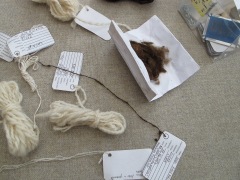
Luxury fibers spun and unspun…the intriguing dark brown is ‘sea silk’…
In the end, the workshop was everything I hoped it would be. I solidified what I already knew, learned new techniques that are helping me spin faster and more consistently and I got to do my favorite thing: experiment with lots of different kinds of materials!
Now, I can’t wait for Andie Luijk’s indigo dying workshop in September!
45.613137
8.104810
